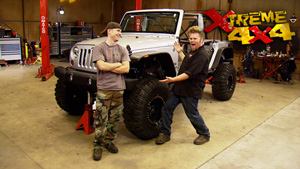Parts Used In This Episode
Crane Hi Clearance
8620 Chromoly Steel Inner Cs
Crane Hi Clearance
8620 Chromoly Steel Outer Knuckles
Overkill Engineering
Front and Rear Bolt In Atomic Axle Kits
Randy's Ring & Pinion
35 Spline Pinion Yoke
Randy's Ring & Pinion
4.86 Ring & Pinion Set
Randy's Ring & Pinion
Billet Pinion Support
Randy's Ring & Pinion
Master Overhaul Installation Kit
Randy's Ring & Pinion
Nodular Iron Third Member Case
Randy's Ring & Pinion
Yukon Grizzly Locker Differential
RIPP Modifications
JK Supercharger Kit V3 Si-Trim Stage 2 Intercooler
RIPP Modifications
Stainless Long Tube Headers with Cats








